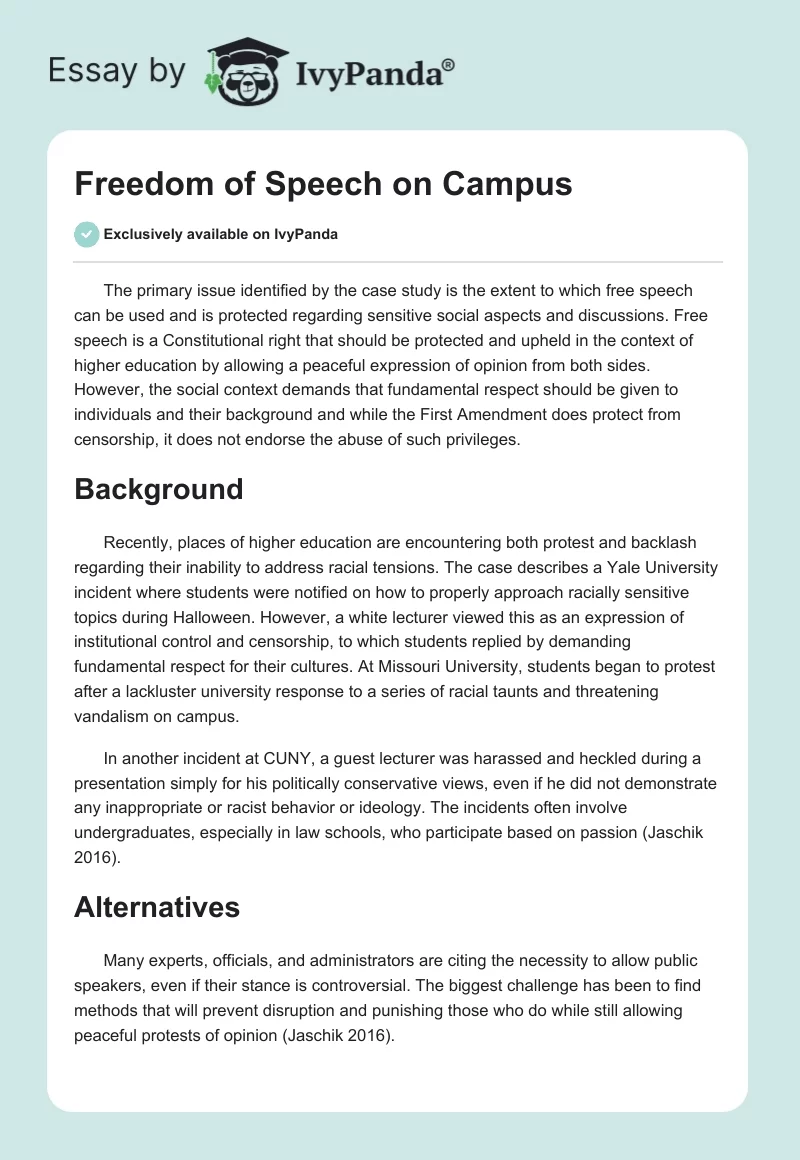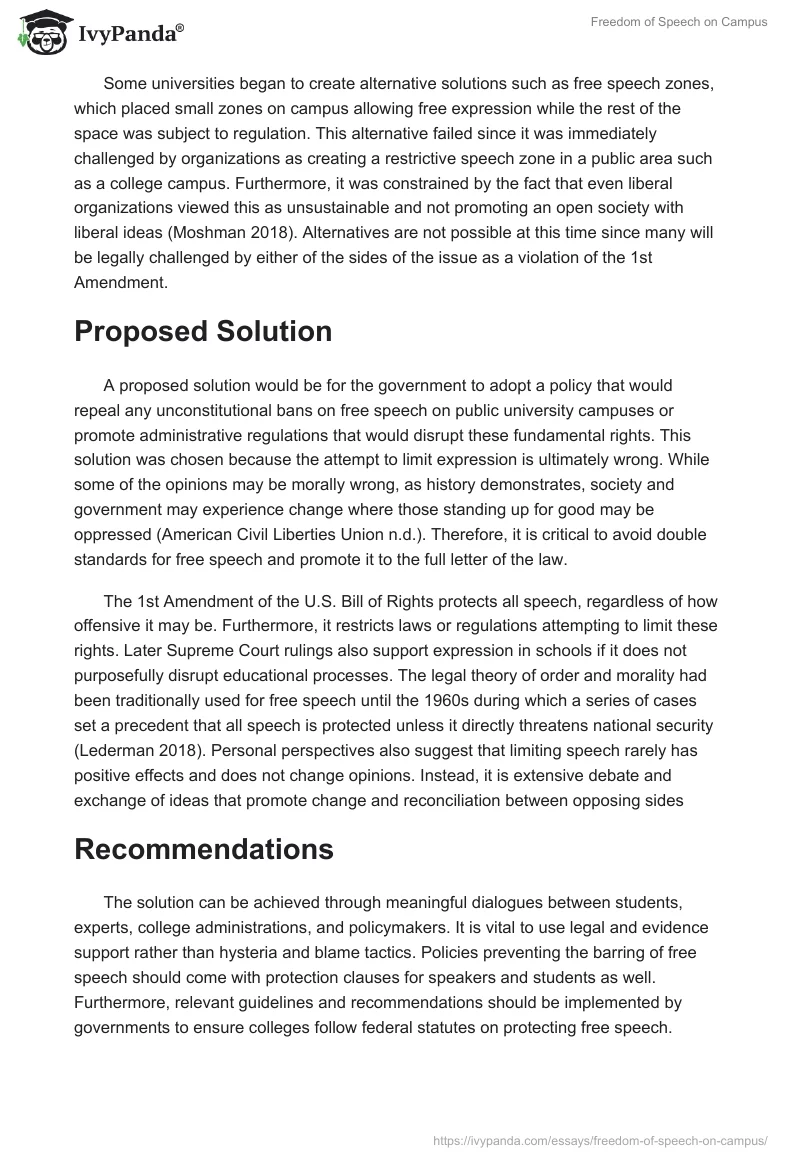The primary issue identified by the case study is the extent to which free speech can be used and is protected regarding sensitive social aspects and discussions. Free speech is a Constitutional right that should be protected and upheld in the context of higher education by allowing a peaceful expression of opinion from both sides. However, the social context demands that fundamental respect should be given to individuals and their background and while the First Amendment does protect from censorship, it does not endorse the abuse of such privileges.
Background
Recently, places of higher education are encountering both protest and backlash regarding their inability to address racial tensions. The case describes a Yale University incident where students were notified on how to properly approach racially sensitive topics during Halloween. However, a white lecturer viewed this as an expression of institutional control and censorship, to which students replied by demanding fundamental respect for their cultures. At Missouri University, students began to protest after a lackluster university response to a series of racial taunts and threatening vandalism on campus.
In another incident at CUNY, a guest lecturer was harassed and heckled during a presentation simply for his politically conservative views, even if he did not demonstrate any inappropriate or racist behavior or ideology. The incidents often involve undergraduates, especially in law schools, who participate based on passion (Jaschik 2016).
Alternatives
Many experts, officials, and administrators are citing the necessity to allow public speakers, even if their stance is controversial. The biggest challenge has been to find methods that will prevent disruption and punishing those who do while still allowing peaceful protests of opinion (Jaschik 2016).
Some universities began to create alternative solutions such as free speech zones, which placed small zones on campus allowing free expression while the rest of the space was subject to regulation. This alternative failed since it was immediately challenged by organizations as creating a restrictive speech zone in a public area such as a college campus. Furthermore, it was constrained by the fact that even liberal organizations viewed this as unsustainable and not promoting an open society with liberal ideas (Moshman 2018). Alternatives are not possible at this time since many will be legally challenged by either of the sides of the issue as a violation of the 1st Amendment.
Proposed Solution
A proposed solution would be for the government to adopt a policy that would repeal any unconstitutional bans on free speech on public university campuses or promote administrative regulations that would disrupt these fundamental rights. This solution was chosen because the attempt to limit expression is ultimately wrong. While some of the opinions may be morally wrong, as history demonstrates, society and government may experience change where those standing up for good may be oppressed (American Civil Liberties Union n.d.). Therefore, it is critical to avoid double standards for free speech and promote it to the full letter of the law.
The 1st Amendment of the U.S. Bill of Rights protects all speech, regardless of how offensive it may be. Furthermore, it restricts laws or regulations attempting to limit these rights. Later Supreme Court rulings also support expression in schools if it does not purposefully disrupt educational processes. The legal theory of order and morality had been traditionally used for free speech until the 1960s during which a series of cases set a precedent that all speech is protected unless it directly threatens national security (Lederman 2018). Personal perspectives also suggest that limiting speech rarely has positive effects and does not change opinions. Instead, it is extensive debate and exchange of ideas that promote change and reconciliation between opposing sides
Recommendations
The solution can be achieved through meaningful dialogues between students, experts, college administrations, and policymakers. It is vital to use legal and evidence support rather than hysteria and blame tactics. Policies preventing the barring of free speech should come with protection clauses for speakers and students as well. Furthermore, relevant guidelines and recommendations should be implemented by governments to ensure colleges follow federal statutes on protecting free speech.
Reference List
American Civil Liberties Union n.d., Speech on campus. Web.
Jaschik, S 2016, Shouting down talk on campus free speech. Web.
Lederman, D 2018, A more nuanced view of law on campus speech. Web.
Moshman, D 2018, Four campus free speech problems solved. Web.


